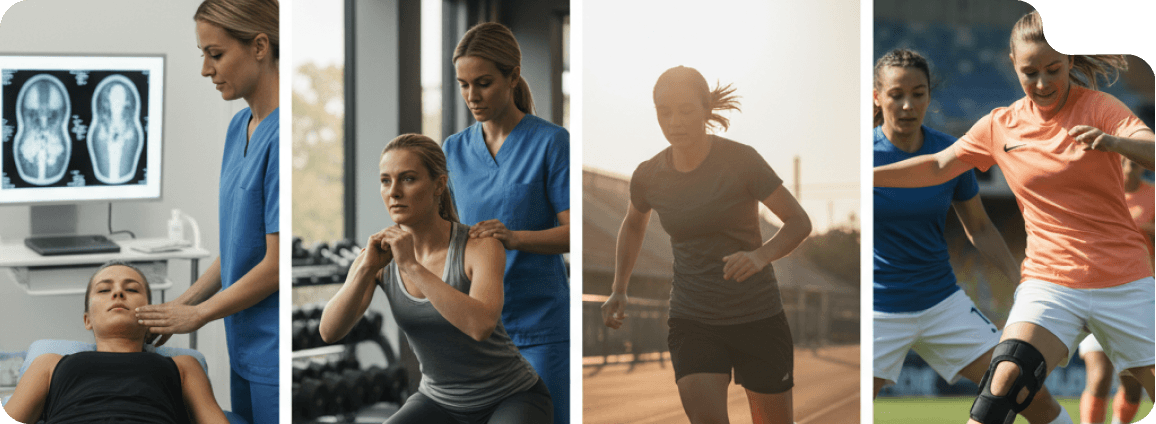Your journey at Restore Physiotherapy:
Example of returning to soccer after ACL surgery
Scenario
A passionate female soccer player came to us with an ACL tear in her left knee after landing from a header. She was assessed in our clinic and quickly referred for an MRI, which confirmed the rupture. After consultation with an orthopaedic surgeon, she opted for surgery with the goal of getting back on the field.
Solution
Our team designed a rehabilitation program immediately after surgery, focusing on reducing swelling, regaining range of motion, and gently reactivating her muscles. These early stages were all about getting the basics right and preparing her knee for the next phase of rehab.
As she progressed, we introduced strength training by first using bodyweight and building up to more challenging gym-based exercises to target her legs and core. Once she had a solid strength foundation, we commenced a running program to build volume and speed. Following this, we moved into more dynamic, sport-specific work, such as landing, cutting, and changing direction, all while gradually increasing the speed and intensity.
Finally, we guided her back into soccer training, starting with low-contact skills and slowly progressing to full-contact drills, including tackling and bumping.
Results
The patient made a successful return to the field after 11 months of focused rehab and training. Thanks to the structured strength, movement, and agility work, she felt stronger, more stable, and more confident in her movements. Our patient is still playing competitive soccer after 10 years and hasn’t had a single knee issue since.





